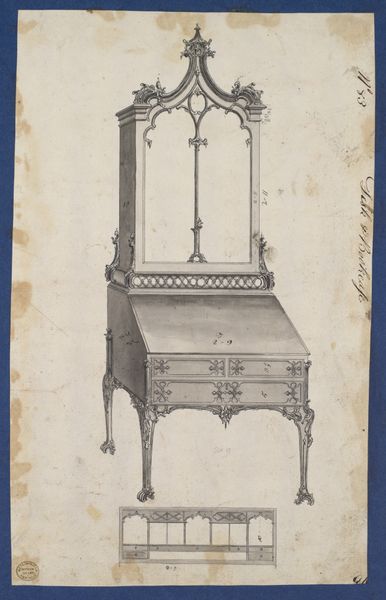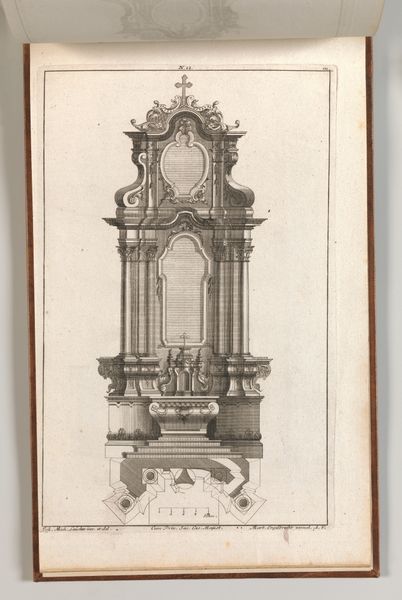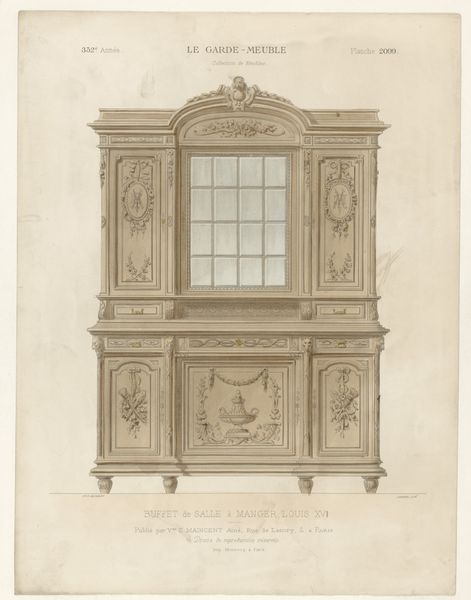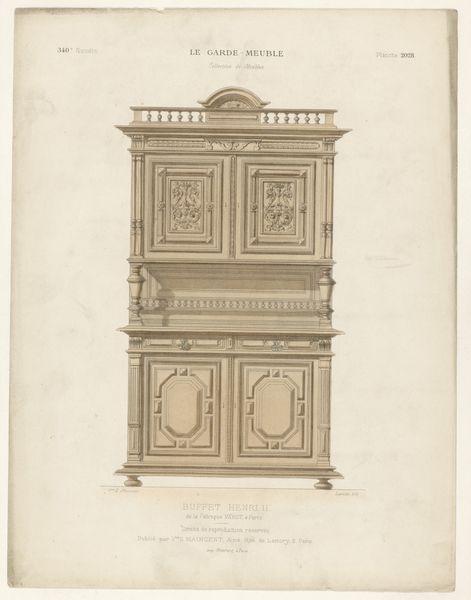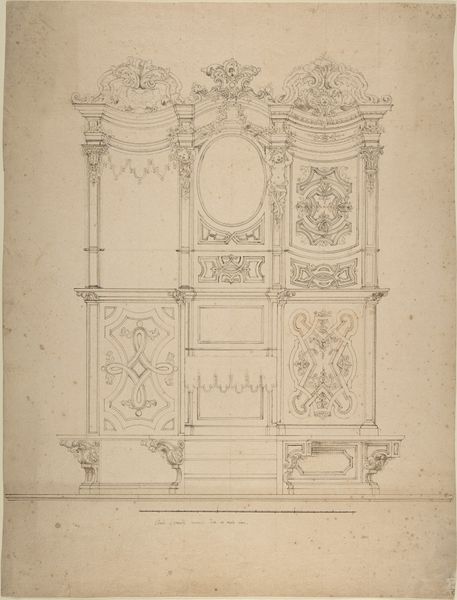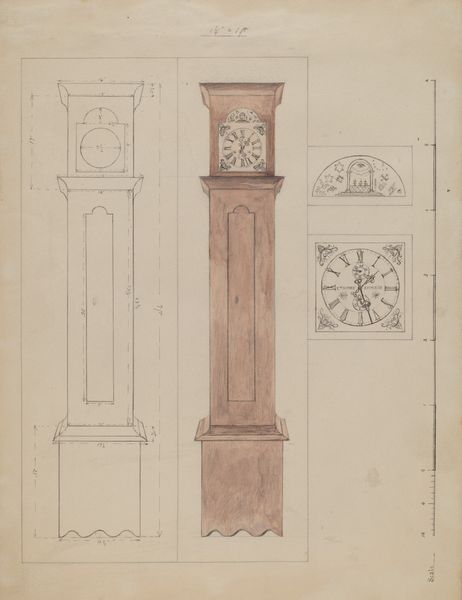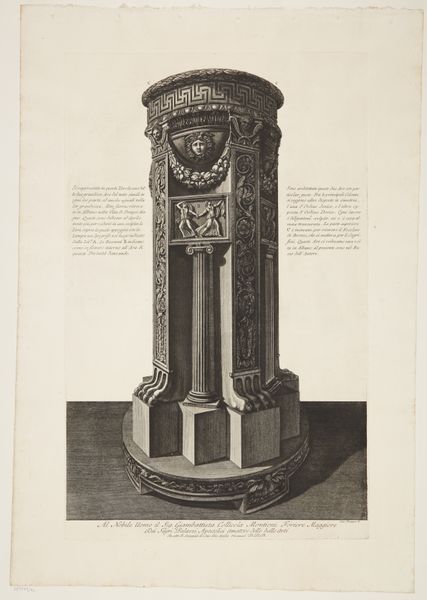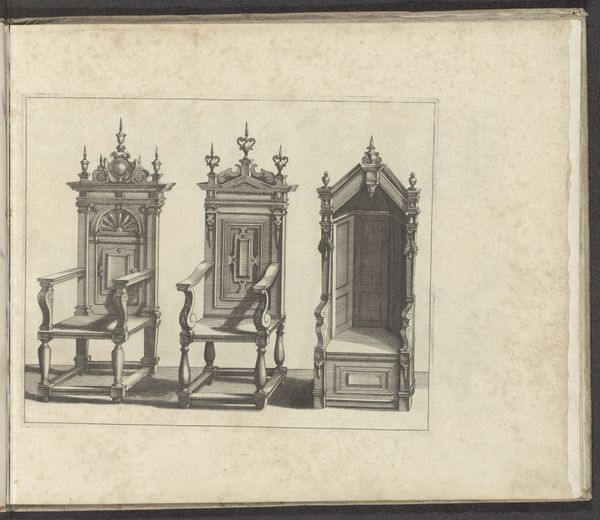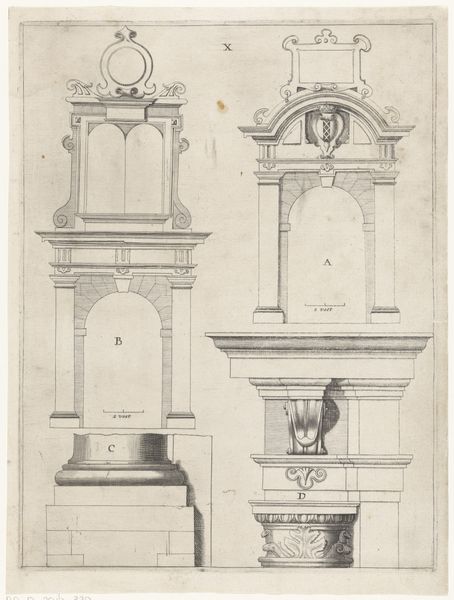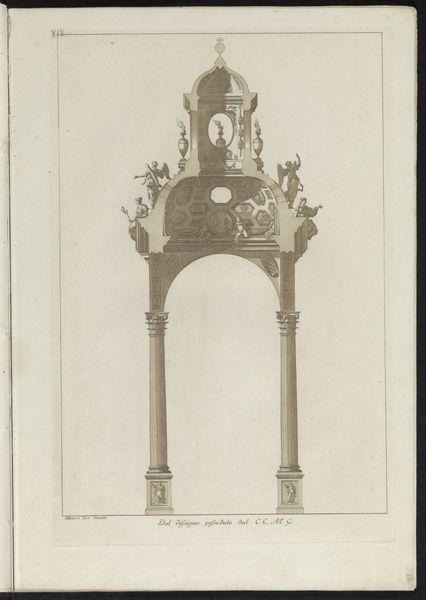
Design for furniture in a variation on the style of Thomas Sheraton, a desk or bookcase, a plate-warmer (?) pedestal, and a cradle 1810 - 1820
0:00
0:00
drawing, print
#
drawing
#
neoclacissism
# print
#
furniture
#
geometric
#
history-painting
Dimensions: Sheet: 11 x 7 11/16 in. (27.9 x 19.5 cm)
Copyright: Public Domain
Curator: Editor: Here we have a drawing from 1810-1820, of furniture designs, after Thomas Sheraton. The drawing itself is pretty, but the shapes feel rigid. What's interesting about looking at furniture this way? Curator: I think it reveals the aspirations of a specific social class during that era. Consider the labor involved: the sourcing of materials, the craftsmanship required for carving and inlay. Were these pieces made by individual artisans, or did they reflect nascent factory production methods? Editor: That’s a good question. Looking closer, the rendering is very precise, almost like it could be replicated easily, which would make mass production plausible. Would a materialist analysis look at the actual objects if they were extant or is it only in relationship to the reproduction in this rendering? Curator: Ideally, one would examine existing pieces if possible, to understand the specific techniques employed, and how the materials themselves dictated the final form. This drawing, as a print, democratizes the consumption of luxury—allowing more to participate in trends. Think about the paper it’s printed on, how it was made, the impact on forestry and industry. How available would those items be at that time? Editor: So even the design is, itself, a commodity, beyond the furniture. And someone bought it for inspiration. It's a cascade! I'd never considered design this way before, linking it all to production. Curator: Precisely! By shifting the focus to materials and production, we see how these designs participate in a much larger network of exchange and labor, which shifts our perspective from the artistry to production itself. Editor: Right, instead of focusing on "good" or "bad" taste. Thanks for illuminating that for me! Curator: My pleasure! It’s rewarding to see design in light of social change.
Comments
No comments
Be the first to comment and join the conversation on the ultimate creative platform.

